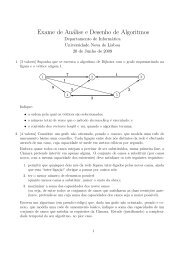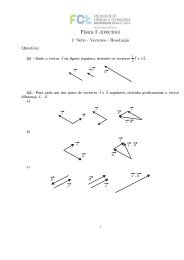Security Articles from Wikipedia
Security Articles from Wikipedia
Security Articles from Wikipedia
Create successful ePaper yourself
Turn your PDF publications into a flip-book with our unique Google optimized e-Paper software.
Transport Layer <strong>Security</strong> 152<br />
TLS 1.1<br />
TLS 1.1 was defined in RFC 4346 in April 2006. [14] It is an update <strong>from</strong> TLS version 1.0. Significant differences in<br />
this version include:<br />
• Added protection against Cipher block chaining (CBC) attacks.<br />
• The implicit Initialization Vector (IV) was replaced with an explicit IV.<br />
• Change in handling of padding errors.<br />
• Support for IANA registration of parameters.<br />
TLS 1.2<br />
TLS 1.2 was defined in RFC 5246 in August 2008. It is based on the earlier TLS 1.1 specification. Major differences<br />
include:<br />
• The MD5-SHA-1 combination in the pseudorandom function (PRF) was replaced with SHA-256, with an option<br />
to use cipher-suite specified PRFs.<br />
• The MD5-SHA-1 combination in the Finished message hash was replaced with SHA-256, with an option to use<br />
cipher-suite specific hash algorithms. However the size of the hash in the finished message is still truncated to<br />
96-bits.<br />
• The MD5-SHA-1 combination in the digitally-signed element was replaced with a single hash negotiated during<br />
handshake, defaults to SHA-1.<br />
• Enhancement in the client's and server's ability to specify which hash and signature algorithms they will accept.<br />
• Expansion of support for authenticated encryption ciphers, used mainly for Galois/Counter Mode (GCM) and<br />
CCM mode of Advanced Encryption Standard encryption.<br />
• TLS Extensions definition and Advanced Encryption Standard CipherSuites were added.<br />
TLS 1.2 was further refined in RFC 6176 in March 2011 redacting its backward compatibility with SSL such that<br />
TLS sessions will never negotiate the use of Secure Sockets Layer (SSL) version 2.0.<br />
Applications<br />
In applications design, TLS is usually implemented on top of any of the Transport Layer protocols, encapsulating the<br />
application-specific protocols such as HTTP, FTP, SMTP, NNTP and XMPP. Historically it has been used primarily<br />
with reliable transport protocols such as the Transmission Control Protocol (TCP). However, it has also been<br />
implemented with datagram-oriented transport protocols, such as the User Datagram Protocol (UDP) and the<br />
Datagram Congestion Control Protocol (DCCP), usage which has been standardized independently using the term<br />
Datagram Transport Layer <strong>Security</strong> (DTLS).<br />
A prominent use of TLS is for securing World Wide Web traffic carried by HTTP to form HTTPS. Notable<br />
applications are electronic commerce and asset management. Increasingly, the Simple Mail Transfer Protocol<br />
(SMTP) is also protected by TLS. These applications use public key certificates to verify the identity of endpoints.<br />
TLS can also be used to tunnel an entire network stack to create a VPN, as is the case with OpenVPN. Many vendors<br />
now marry TLS's encryption and authentication capabilities with authorization. There has also been substantial<br />
development since the late 1990s in creating client technology outside of the browser to enable support for<br />
client/server applications. When compared against traditional IPsec VPN technologies, TLS has some inherent<br />
advantages in firewall and NAT traversal that make it easier to administer for large remote-access populations.<br />
TLS is also a standard method to protect Session Initiation Protocol (SIP) application signaling. TLS can be used to<br />
provide authentication and encryption of the SIP signaling associated with VoIP and other SIP-based applications.









